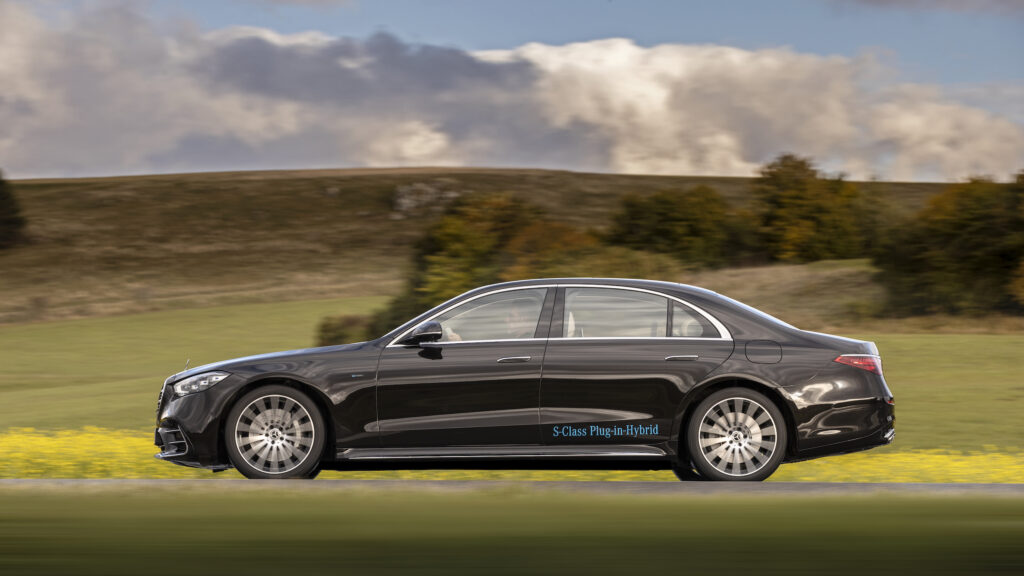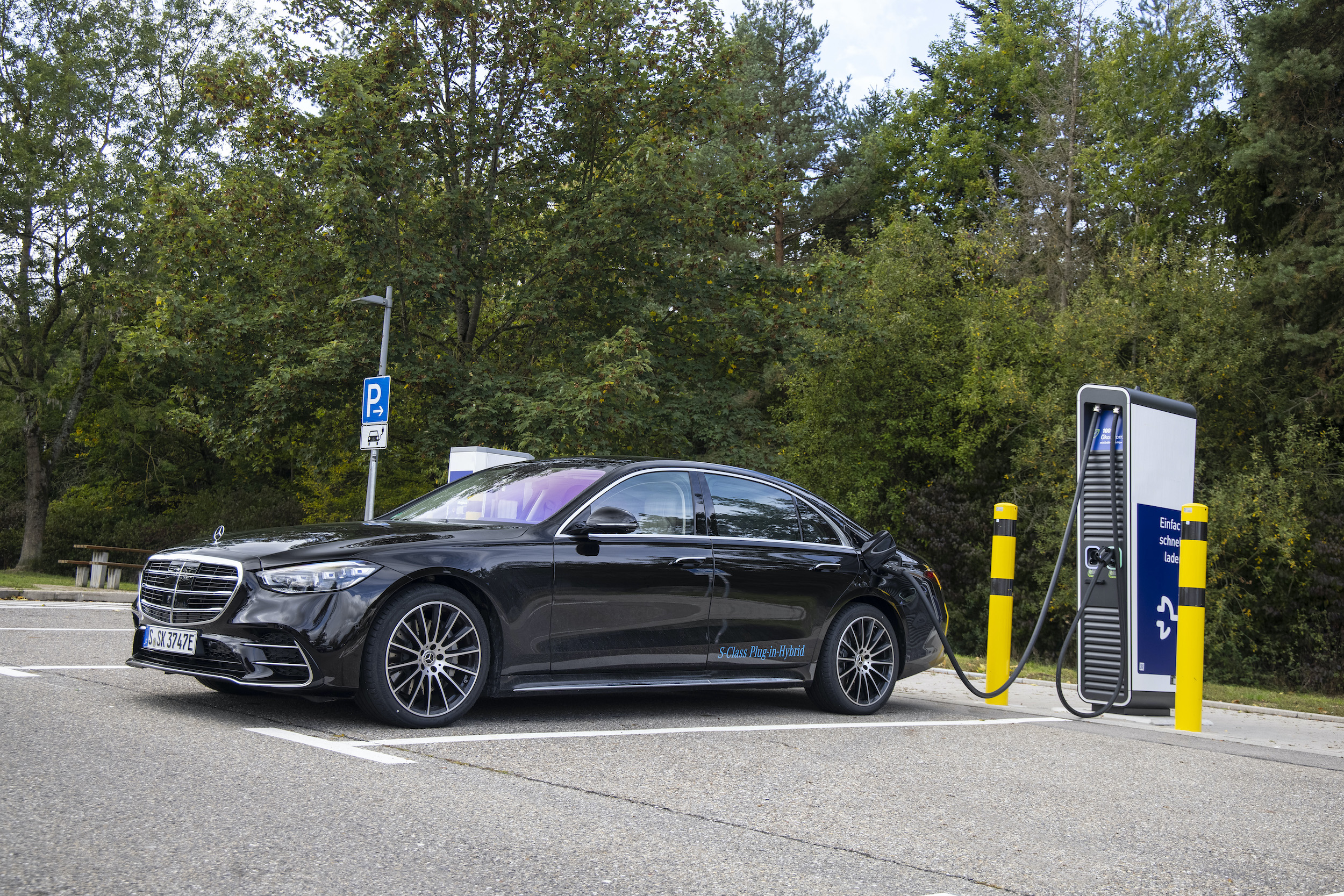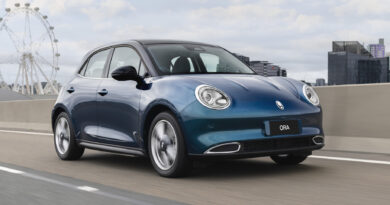Driven: Mercedes-Benz’s PHEV limousine with 100km EV range
Mercedes-Benz engineers are quietly confident the plug-in hybrid version of the new S-Class luxury limousine will have a 100km electric-only driving range.
Right now the S580e PHEV is a work in progress. Once the finishing engineering touches are complete, the big sedan will be put through mandatory homologation tests to check its energy efficiency, emissions and driving range. Production of both regular and long-wheelbase versions of the S580e is due to start in 2021, with deliveries in Europe beginning around July.

Engineers working on the S580e believe it will earn a three-figure electric-range rating according to the reasonably realistic WLTP test standard. They expect the exact number to be 102 or 103km.
Mercedes-Benz brought pre-production prototypes of the S580e to the recent media introduction of the all-new S-Class range in Germany. The cars were made available for a brief test on public roads around the company’s new Immendingen test centre.

There’s no secret to getting a long electric-only driving range from a PHEV. The S580e simply has a big battery. With a usable capacity of 28.6kWh, the 241kg lithium-ion pack stores more energy than those in early versions of the Nissan Leaf and BMW i3.
Mercedes-Benz developed a compact rear suspension for the entire S-Class line-up with the needs of the PHEV in mind. The S580e’s battery pack sits above its rear axle and under the the flat floor of its very large boot.

The car will come standard with an 11kW AC charger, while 60kW DC fast-charging capability via a CCS Combo 2 plug port will be an optional extra; if it’s similar to that available in the just-released Mercedes-Benz A250e it should cost less than $2000. A complete recharge using DC charging will take less than 30 minutes.

In electric mode the S580e is powered by a motor sandwiched between its
six-cylinder engine and nine-speed automatic. Maximum power and torque output of the synchronous motor are 110kW and 440Nm. Top speed is limited to 140km/h in electric mode.
The engine of the PHEV is the 3.0-litre in-line six with electric booster compressor and turbocharger that Mercedes-Benz introduced back in 2017. In the S580e its maximum outputs are 270kW and 500Nm.
Add up the numbers and it’s plain to see that the combined petrol-electric punch of the S580e power unit is substantial, but Mercedes-Benz limits maximum torque to 750Nm. This is as much as the transmission can safely handle. Power peaks at 380kW.

As Mercedes-Benz’s flagship model the S-Class is usually the first to get the
company’s latest technology. The new one sticks to this tradition.
The tastefully opulent interior is classier than the current S-Class, but it’s the new tech that stands out more. In the middle of the beautifully detailed dash is an even more beautiful screen.

The slanting, portrait-oriented, OLED touchscreen display is the centrepiece of the new S-Class’s second-generation MBUX (Mercedes-Benz User eXperience) infotainment system. It’s more powerful than before, and brings a lengthy bunch of new or improved functions.
It’s a similar story with driver-assist, passive safety, lighting, instrument and audio systems. The S-Class gets the best of everything Mercedes-Benz can offer, with more to come during its life.
Driving the S580 e in electric mode ehances the S-Class experience. All versions are equipped standard with air suspension, so the big sedan rides more like a hovercraft than a car. While the non-PHEV models are very quiet and refined, the S580 e is quieter than an empty church when driving electrically.
It’s also rather fun to drive. Optional rear-wheel steering tightens the turning circle and makes the S-Class feel more agile and less bulky than it should.
Performance in electric mode is surprisingly snappy. The electric motor may not be hugely powerful, but it has strong torque from low revs. It was raining steadily on the day we tried the PHEV, and its traction control had plenty to do when pulling away at intersections.

Push the accelerator pedal past the point of resistance that signals the point of switching on the engine is near and the S580 e leaps forward with real eagerness. It’s quick.
Except for one intentional activation of the S580 e’s engine, just to feel what it had to offer, the entire 45km test route was driven electrically. Mostly country roads, it wasn’t the kind of stop and start driving that delivers the maximum electric driving range. It was also a cold day, with temperatures between 5 and 10 degrees, so heating the car’s vast cabin was a major burden for the battery to bear.
Still, at the end of the loop the battery’s state of charge readout was showing 38 percent. There were 29km of electric driving left in it, according to the car’s own calculations.Will the S580 e be able to deliver a real-world electric driving range of 100km in more favourable driving and weather conditions? We’ll have to wait until late 2021, when it arrives in Australia, to find out. But you can count on it bettering 60km pretty much any day of the week…




